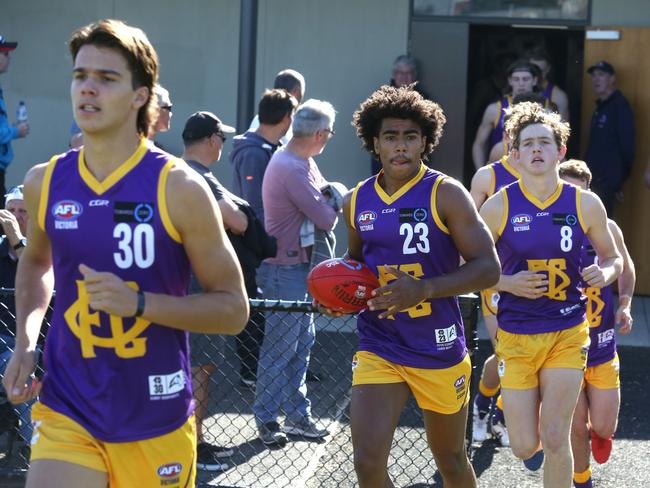From Windy Hill to Warrawee Park, Melbourne has a collection of classic football grounds
Before footy became a multi-billion dollar business played in purpose-built stadiums, it was a Saturday afternoon Melbourne ritual in cosy grounds where you could often watch while still sitting in your car. Here is our pick of the best that have stood the test of time.

Local Footy
Don't miss out on the headlines from Local Footy. Followed categories will be added to My News.
From inner-city venues where footy has been played for more than 100 years, to some of the quainter grounds in the outer suburbs, Melbourne is home to some classic football grounds.
Here is our pick of the best where you can still take in the action (once footy gets going again).
WONDERFUL WINDY HILL: KEVIN SHEEDY REMEMBERS
VIC PARK: PETER DAICOS ON THE PIES’ SPIRITUAL HOME
WATCH: SUBURBAN LEGEND’S 1000TH GOAL
TRIPLE THREAT: SUN SHINES ON BLUES’ BIG DAY
Brunswick Street Oval, Fitzroy
Nestled among Edinburgh Gardens in Fitzroy, the ground hosted VFA and VFL games from 1883 to 1966. The grandstand is on the Victorian Heritage Database as a “fine example of 19th century timber grandstand at a major sporting venue”, and the ground “stands as an important reminder of the contribution made by Fitzroy to the history of Australian football in Victoria”. The venue plays host to VAFA club Fitzroy Reds.
Fitzroy Football Club coach Luke Mahoney: “I think it’s just the way the ground sits in within the inner city, it’s got a great sort of landscape in the background of the city. The way the trams rattle through there at night when the lights are on, that is certainly something that is a little bit unique as opposed to a lot of other sporting grounds around Melbourne.”
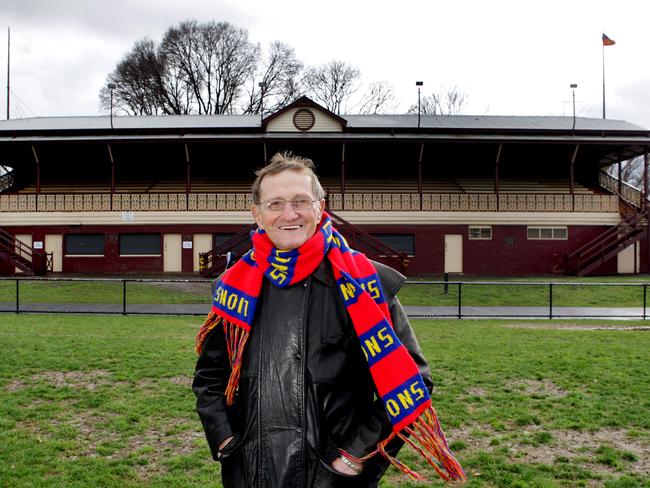
HAVE YOUR SAY: What’s your favourite suburban ground? Tell us below
Bill Lawry Oval, Northcote
Named after the former Australian cricket captain, Bill Lawry Oval is regarded as one of the premier venues in the Northern Football Netball League. The ground is home to Northcote Park Football Club in the winter and Premier Cricket outfit Northcote Cricket Club in the summer. Complete with the Arthur Spain scoreboard and historic grandstand, it is a step back in time.
Northcote Park Football Club general manager Dennis McNiece: “There’s obviously a lot of history, you walk in the place and it actually is a pretty special feeling. There’s just been a lot of history and a lot of great players pass through the footy and the cricket club. We feel like it is a pretty special place with the old grandstand, it gives a lot of atmosphere.”

Bayswater Oval, Bayswater
There’s nowhere to hide at Bayswater Oval, which packs in thousands of spectators each September for the Eastern Football League finals (the Division 1 grand final has been played there since 2001). No matter where you stand, you’re guaranteed a great vantage point of the action. And for the players, there’s a lot of ground to cover. Only the fit survive in the Eastern finals.
Bayswater Football Club president Gary Galvin: “I reckon it’s the best looking ground, if you can say that, for football in the Eastern Football League. Where else can you get 150 cars in and still watch the footy? Even in the finals when they don’t have any cars, still everyone can see the footy, it doesn’t matter where you stand.”
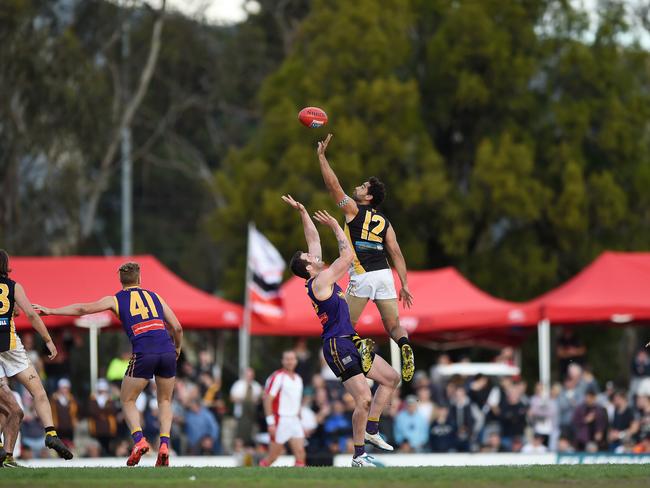
Windy Hill, Essendon
Officially known as Essendon Recreation Reserve but universally referred to as Windy Hill after former Collingwood champion Lou Richards coined the nickname for the ground. Essendon Football Club played home games at the venue from 1922 to 1991 and spectators saw a cavalcade of champions, including John Coleman, Dick Reynolds, Terry Daniher and Simon Madden. Essendon still plays VFL games at the ground, providing a throwback to a bygone era for diehard Bombers fans with views from the W.H Cookson Stand, Allan T. Hird Stand and the R.S. Reynolds Stand.
Essendon Historical Society president Bob Chalmers: “It has been the home base for many champion players that have gone through the club. It was such a different atmosphere, it was friendly, they were home and I think that was the good thing about it that you felt part of it that you could go down and talk to your heroes and be close to them.”
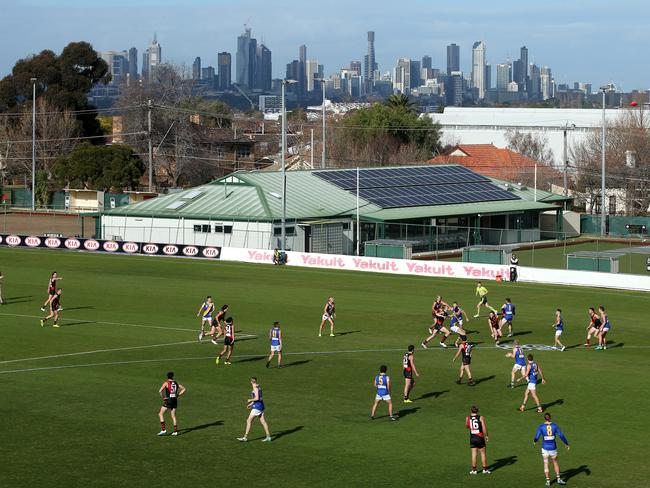
Williamstown Football Ground, Williamstown
Located on Point Gellibrand, Williamstown can be a wild place for football, with rain and wind often lashing the ground. In torrential conditions last month, Sandringham was held goalless — the first time a VFA/VFL side has failed to kick a goal in a game since 1919. On the same day, Channel 7 had a 120kg camera blown off the scaffolding. Conversely, when the sun is out and the weather calm, it’s a glorious venue with its views of Port Phillip Bay and the city. The grandstand is complete with yellow and blue seats — the colours of the historic Williamstown club.
Williamstown Football Club chief executive Jason Reddick: “It’s an iconic ground for its location in the sense that it is out on Point Gellibrand so it is a destination, you don’t drive past it, you actually have to drive to it and because of it’s positioning, it has the best and the worst of the weather conditions and that is part and parcel of its reputation.”
A remarkable goal from Willie Wheeler!
— 7VFL (@7VFL) June 17, 2018
This should never have gone in but such are the conditions! #PJVFL #7VFL pic.twitter.com/p2w4DjJrg8
Preston City Oval, Preston
Preston City Oval — Cramer St — provides a suburban football fix for lovers of the grassroots game, with concrete terraces in front of the bar, the Preston Market only a decent torp away and trains rattling by at the back of the grandstand. It has hosted the Northern Football Netball League Division 1 and Division 2 grand finals for the past decade, but is widely known as the home of the Northern Blues, formerly Preston in the VFA. The Bullants emblem was one of the best in football until it was unceremoniously binned.
Northern Football Netball League media manager Samuel Zito: “From our point of view, it is the premier footy ground in the northern suburbs of Melbourne. There’s been seen some thrilling games there and it’s really been the showcase venue for us to use for our finals and hopefully we get to use it for many years to come. Obviously it is located right in the heart of the northern suburbs too, so it is a pretty central ground for most clubs in our region to get to.”

Shepley Oval, Dandenong
The charm of the City of Greater Dandenong’s major sporting ground starts at the entrance, where you pass through iron gates the local council says were sourced from Springvale cemetery almost 70 years ago. Spectators can watch from a row of gums on the wing, from the grandstand on the opposite side, from the balcony recently added to the social club or the “hill’’ at the bottom end, 20m from where Dandenong Creek flows. Sport has been played at Shepley since the late 1880s. But the venue’s reputation rose to prominence through Dandenong Football Club, when players such as Jim “Frosty’’ Miller, Eddie Melai and Pat Flaherty became giants of the old VFA. People getting on in years still talk about the days of Frosty setting the goal flags fluttering at Shepley. The Redlegs played there from 1962 until they folded in 1994. The Dandenong Stingrays, bringing together the southeast and Mornington Peninsula region’s best young talent for Under 18 TAC Cup, moved in. And since then almost 90 players — including Brendan Fevola, Nathan Jones, Tom Lynch and Tom Scully — have played at Shepley and gone on to league football. Premier Cricket club Dandenong — home of James and Darren Pattinson and Peter Siddle — is the summer tenant. The ground is named after leading Dandenong citizen Harry Shepley, the first secretary of the Dandenong District Cricket Association.
Former Coburg player and coach Phil Cleary: “A day at Shepley Oval, Dandenong was epic. In the ’70s it took hours to make it down the Princes Highway and the ground always adorned with a canopy of brooding clouds. They perfectly complemented the red and black colours of the Redleg players and the ferocious denizens who occupied every inch of space in the little wooden grandstand. Shepley was the only ground where I was offered a police escort to my car.’’
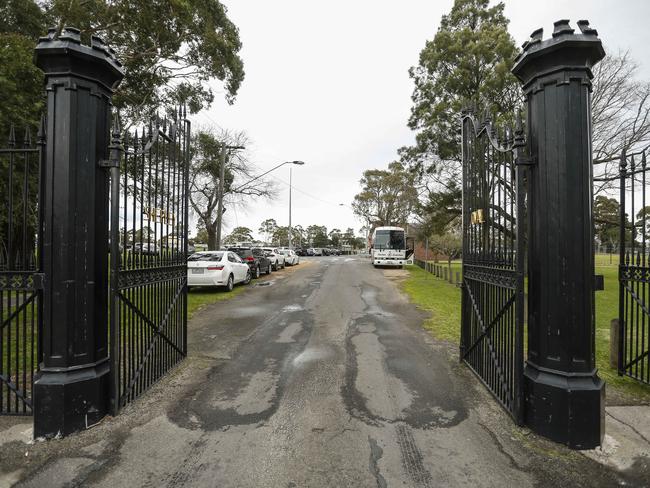
St Kilda Cricket Ground, St Kilda
Commonly known as the Junction Oval, this historic ground is now the home of Cricket Victoria and called CitiPower Centre after a $40 million redevelopment. But around former St Kilda Cricket Club premiership captain and coach and president Tim O’Sullivan, always call it by the name recognised by the Victorian Heritage Database Report: St Kilda Cricket Ground. To do otherwise is to risk a rather stern correction. Flanked by Queens Rd and Lakeside Drive, the oval was established in 1856 as the home of the cricketing Saints, who were formed a year earlier. Years later it also became home to league football clubs St Kilda, South Melbourne and Fitzroy. VFL grand finals were staged at the Junction in 1898, 1899 and 1944, with spectators at the first two deciders sitting in a grandstand relocated from the old Elsternwick racecourse.
A new grandstand was built in 1925-6 and called the GP Newman Stand. It was later changed to the Kevin Murray Stand in recognition of the Fitzroy champion “Bulldog’’ Murray. The Murray stand wasn’t touched during the recent redevelopment but there are plans to upgrade it and increase the seating capacity of the oval. A second grandstand, named after Test cricketers Don Blackie and Bert Ironmonger, came later and commands the eye. While the ground took in a lot of league football, it also staged many VFA finals fixtures, including the controversial 1976 decider between Port Melbourne and Dandenong, when Port champion Fred Cook was decked behind play, setting off chaotic scenes. The last football match was played at St Kilda in 2015, between amateur clubs Old Melburnians and Caulfield Grammarians.

North Port Oval, Port Melbourne
North Port, home of the iconic Port Melbourne football and cricket clubs, has been in the news for the wrong reasons this year, with its surface ruled unsafe for three VFL matches. Port Phillip council has promised a $4 million redevelopment at the end of the season to improve drainage and bring it up to scratch. Before then North Port will again host three weeks of VFL finals, fixtures that have attracted crowds of up to 5000 in recent years and filled the Norm Goss grandstand, named after Port Melbourne Football Club’s legendary administrator. The stand overlooks a ground ringed by white pickets and new apartments that sprang up when Ingles St factories were demolished. They included the soap and candle manufacturing plant, which gave off a distinctive smell that often fell over the football and cricket ground. Beyond Ingles St is a commanding view of the city skyline. The ends of the ground have been named after Port’s legendary goalkicking duo Fred Cook and Bob Bonnett. North Port has hosted seven VFA/VFL grand finals, including the memorable 1997 encounter between Frankston and Sandringham. A true standing-room-only affair, it was played in a rugged fashion that revived memories of the old VFA.
Port Melbourne supporter Fiona McKenzie: “North Port Oval … that place is the true essence, the spiritual home of the suburb of Port Melbourne. It’s always felt like my second home. I get nostalgic every time I walk through the gates. I’ve sat in the back row of the Norm Goss Stand ever since I was a kid — there’s no better view in football.”

Trevor Barker Beach Oval, Sandringham
Just as traffic whizzes past on Beach Rd, the ball seems to zip around the home ground of the Zebras, these days in alignment for St Kilda but for many years a strong independent VFA and VFL club and home to many champion players. The vehicles are visible now after the famous wall, long buffeted by bay winds, began to crumble and was pulled down in 2011. A small section remains as a reminder of a distinctive feature of the ground, which opened in 1929. For many years known as the Beach Rd Oval, it was named to honour former St Kilda champion Trevor Barker following his death from cancer. Barker had coached the Zebras to the 1992 and 1994 premierships before returning to the Saints as an assistant coach. Other notable figures in Sandy’s history are similarly saluted: the grandstand is named after Neil Bencraft; the administration block after legendary administrator John Mennie; and one of the ends after great goalkicker Nick Sautner. And the toilets at the south end recognise former Sandy hard man Alf Beus, offering relief to spectators who back in his day liked to abuse opposition full backs from the safety of Can Hill.
Sandringham board member Dennis Galimberti: “On arriving at the Beach Oval, having driven the family car down Jetty Rd past the yachts being towed to their moorings, one could sense the ever-present fresh southerly breeze favouring the Can Hill goals. It’s the only sporting oval that has a hill named after the prolific drinkers who swigged from green cans and who came to cheer the Zebras’ goalkicking champions who presided over the goal square at that end; Denis Oakley in the 1950s and 1960s, Ian Cooper in the 1970s, Rex Hunt in the 1980s and the ubiquitous Nick Sautner in the noughties.”
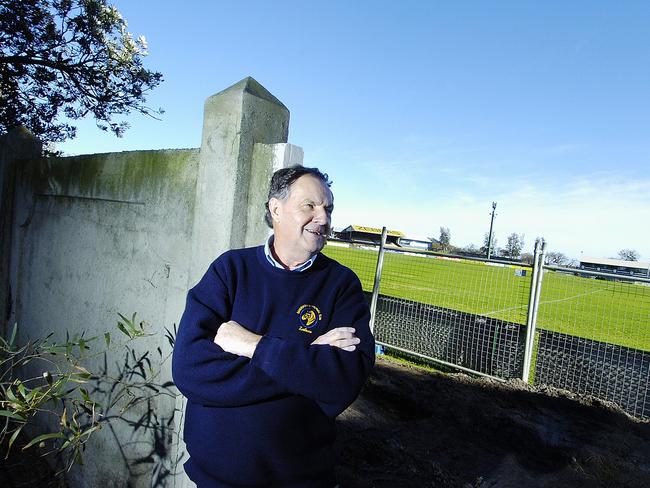
Warrawee Park, Oakleigh
Football followers will always associate the ground with the distinctive purple and gold colours of the Oakleigh Devils, who were affiliated with the old VFA from 1929 until their demise at the end of the 1994 season. By then the Oaks were knocking around in the lower rungs of the ladder and in financial trouble. But they knew some mighty days when big Bob Johnson from Melbourne was coach and, later, when legendary goalkicker Rino Pretto filled the goalsquare. Recruiters like to sit on fold-up chairs and watch the newest hopefuls from TAC Cup team Oakleigh Chargers on the outer wing, which is only a handpass away from the Oakleigh cemetery. The scouts ain’t afraid of no ghosts. Traffic on the always-busy Warrigal Rd flashes past the ground, which is also home to Oakleigh Cricket Club. Joyous scenes unfolded at Warrawee Park in 2004-05 when the Oaks recovered from 4-2 to better Box Hill’s 7-238 in the Sub-District grand final and win their first premiership since 1968-69.
No sooner had the winning run come with a squirt down to third man than success-prived club stalwarts were bustling on to the ground with smiles as wide as the western plains. “An unbelievable game of cricket!’’ bubbled president Peter Webb.
